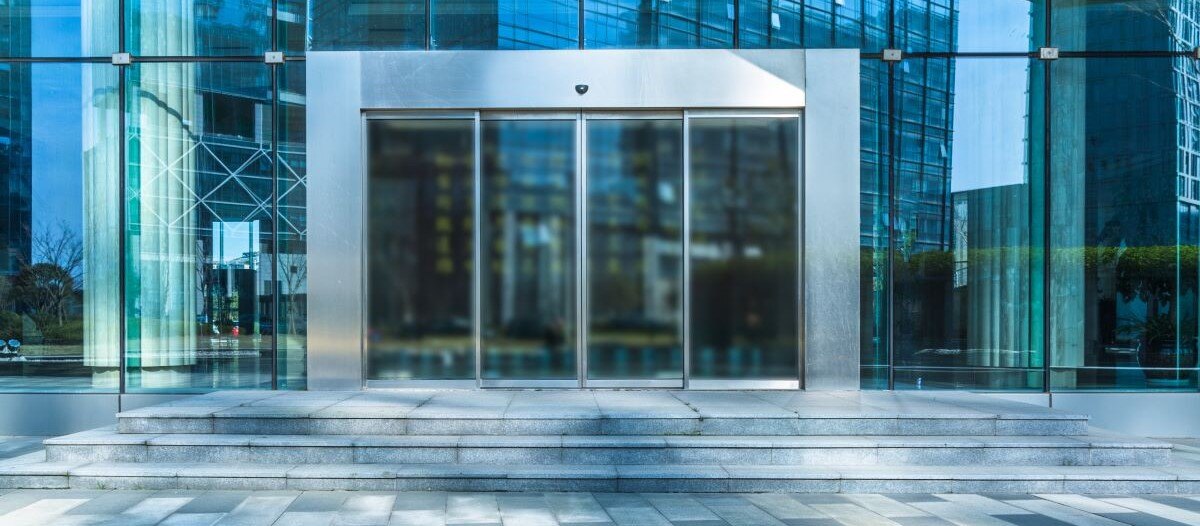What Is Your Image?
What your facility says about your organization

Image is defined as “the general impression that a person, organization or product presents to the public.” An organization can portray its image in many ways: through its branding, its online presence and its facility. Image is of the utmost importance because it can be an organization’s message to the world. Regardless of the organization’s work product or outcomes, image can be a make-or-break factor. A good image can set an organization on a path toward success, resulting in greater productivity and profitability. Adversely, a bad image can lead an organization to failure, resulting in lack of productivity and lack of profitability.
First impressions
In the world of design, many have concluded that there is only one opportunity to make a first impression. In any organization, its facility makes the first impression – whether good or bad – on visitors, clients and employees. What message is the facility sending? The power of the message is critical, as it can tell others everything about an organization without saying a word. It can relay a brand. It can relay a vision/mission. It can relay a purpose.
- It can relay a brand. Most organizations have a curated set of branding guidelines, which direct all print and online communications. However, those guidelines do not often translate to the organization’s facilities. This can create a disconnect. When people spend their time in a facility that is in line with the organization’s brand, it creates a cohesive thread. Visitors, clients and especially employees are then able to live the brand. This also creates a marketing opportunity, with the facility itself serving as a marketing tool for the organization. Imagine walking into a space and becoming instantly immersed in the brand without anyone saying a word. That sends a strong message. Additionally, when employees are able to live the brand day in and day out, they are more likely to carry that brand beyond the facility’s doors.
The Louisiana Lottery Corp. Headquarters in Baton Rouge, Louisiana, USA, is undergoing an interior renovation to better facilitate the new hybrid work styles of its employees and to create an image that is better aligned with the company’s branding. The organization is known for giving away money in a celebratory fashion as well as providing funding for state education. The refreshed design brings an element of celebration and fun to the office building.
- It can relay a vision/mission. Every organization has a vision and a mission, whether formalized through vision and mission statements, or simply spoken and understood. That vision and mission are what guide everyone in the organization toward a common goal. When the facility is designed in such a way as to promote the vision and mission, it helps keep that critical information at the forefront. Some organizations display their vision and mission statements on the wall; others use the facility as a means to relay the vision and mission. The old adage, “out of sight, out of mind” is true here. If the organization’s vision/mission are not in sight – whether literally or figuratively – employees are less likely to work in support of those values and goals.
Technology company Envoc’s mission statement is as follows: “Envoc is an award-winning digital marketing and software development firm whose mission is to provide ‘A Better Reality’ for our team and our clients through radical creativity and productivity.” All of Envoc’s office facilities throughout Louisiana have been designed to create a better reality for its team and clients, providing an environment that promotes creativity.
- It can relay a purpose. Practically speaking, the purpose of a facility is the most essential element to its existence. Why is it here? How is it used? How can it enhance the lives of the people who frequent it? A facility’s image can relay that purpose to all who visit the space. If it is an industrial educational institution, then an industrial-style facility with exposed structure, exposed systems and natural materials would echo the purpose. If it is an executive floor that hosts high-level meetings and high-level clientele in a corporation’s headquarters building, a refined aesthetic with more of a hospitality feel and high-end finishes would illustrate the purpose.
Delgado Community College’s Advanced Technology Center in New Orleans, Louisiana, USA, houses academic STEM programs, labs and faculty to serve academic and workforce programs, specifically the health care, petrochemical, digital media and transportation logistics industries. The purpose of the facility is to educate and train students in these fields. The facility itself echoes that purpose.
The Barnes-Ogden Art & Design Complex at Louisiana State University in Baton Rouge houses multiple art and design programs. Its purpose is to educate students in programs such as painting, sculpture, ceramics and drawing. The first building built on the LSU campus, circa 1910s, this historic facility was recently renovated to provide much-needed updates. A new art gallery was added to create a connector between building wings, and to provide visibility into the purpose of the art and design programs.
Work environment
While the first impression of a facility gives an outward message, mainly to visitors and clients, the type of work environment that is being provided gives an inward message, mainly to the people who work in the building. What message is it sending to a company’s employees? Is the work environment old and static or new and engaging?
For business owners and organizations, facilities are a big expense. It can be easy to spend money on running the business and not on the facility itself. How much time and money are being invested in creating an engaging work environment for employees? Studies have shown that a healthy workplace equals happy and productive employees. To take it a step further, productivity equals profitability. Therefore, the return on investment for providing an engaging work environment is a positive one. Additionally, attracting employees to come back to the office post-pandemic is a real issue. When people are used to the comforts of home, the idea of going back to an old and static work environment is not enticing. Many organizations are renovating their facilities to provide refreshed spaces with upgraded breakrooms and better lounge areas to entice employees to come back to the office.
The Entergy Aerosol building in Hammond, Louisiana, USA, underwent an interior renovation due to work style changes post-pandemic. To provide a more hybrid workspace and encourage workers to come back to the office, the work environment was transformed from an enclosed, outdated space to an open, bright, modern space that promotes employee wellness and collaboration. The result: workers are now eager to work in the energized office.
Maintenance
While first impressions and work environment are critical, nothing is more important than facility maintenance. Owners can invest money to create well-designed spaces, but if those spaces are not well maintained, the return on investment can go unrealized. Facilities upkeep is a key component to a successful project for everyone involved. When a facility is not well kept, it creates a negative perception for both employees and visitors. The perception is that a well-kept facility equals a well-kept company. If an organization is interviewing someone for a new job, and that person sits in a conference chair that is torn on a carpet tile floor that is stained, that could cause the interviewee to wonder what that says about the company: If the company is not willing to take care of its building, how would it plan to take care of its employees? While the correlation of building maintenance may not accurately correlate to the way a company treats its employees, the perception could cause one to question that.
In summary
Facilities can play a critical role in portraying an organization’s image. Regardless of the organization’s work product or outcomes, image can be a make-or-break factor. A good image can set an organization on a path toward success. Adversely, a bad image can lead an organization to failure. Image is of the utmost importance because it can be an organization’s message to the world. What message is the organization sending?

Read more on Leadership & Strategy , Workplace and FM Solutions
Explore All FMJ Topics









